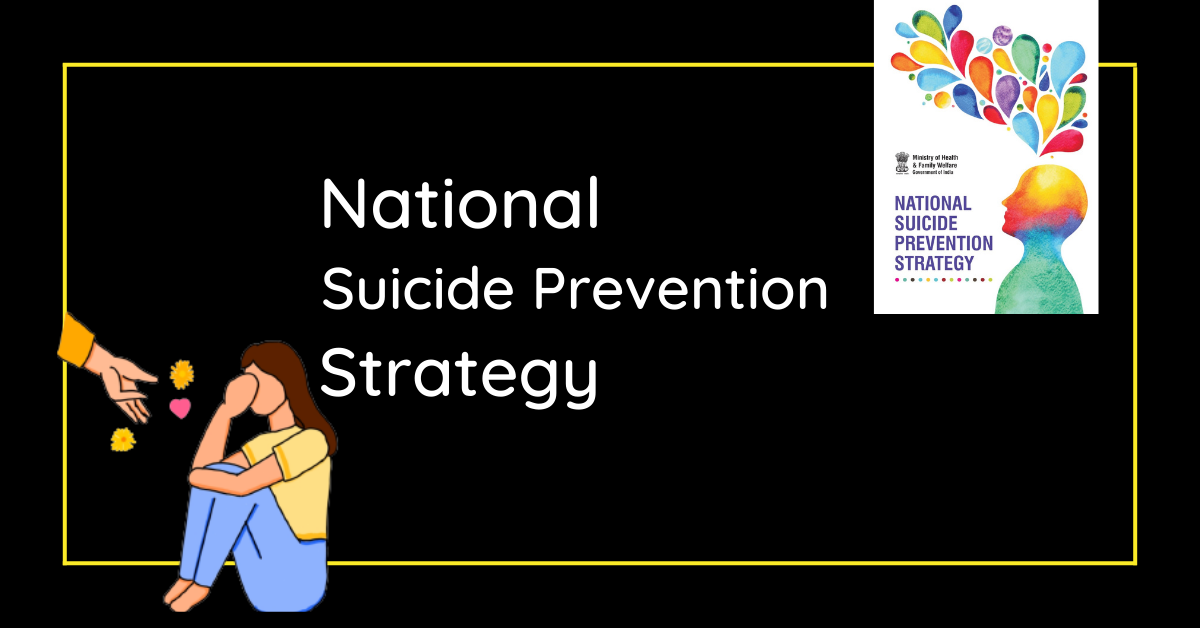The majority of suicide deaths worldwide occur in India. In order to identify the main obstacles and top priorities for suicide prevention, a study on the state of suicides in India was conducted as the Indian government developed a national suicide prevention strategy. The study focused on epidemiology, risk factors, and existing suicide prevention strategies. Indian women and girls continue to commit suicide at a rate that is double the world average. When compared to other causes of death, suicide accounts for the majority of deaths in the 15- to 39-year-old age range. The most popular suicide technique is hanging, which is followed by self-immolation, drug overdose, and pesticide poisoning. The risk of suicide appears to be influenced by a number of social and cultural factors in addition to depressive disorders and alcohol use disorders. Effective suicide prevention is severely hampered by the lack of a national strategy, inappropriate media coverage, ambiguous legal definitions of what constitutes punishable suicide, and insufficient multisectoral engagement. In order to navigate situations where a person might be vulnerable to and at risk of suicide, interventions that are given at the right time, intensity, and duration are helpful in reducing suicide rates. emphasises multilevel action priorities for preventing suicide across various sectors in addition to laying out research and data priorities. In India, there is a call for immediate action to integrate suicide prevention strategies into every aspect of public health, with a particular emphasis on developing and implementing a national suicide prevention strategy.
The National Suicide Prevention Strategy, a groundbreaking government initiative to prevent suicides as a top public health priority, was announced by the Ministry of Health and Family Welfare on Monday, November 21. In the upcoming ten years, the ministry’s policy will lay the groundwork for the promotion of mental health and the prevention of suicide.
The WHO’s strategy for the South East Asian region served as inspiration for the Strategy, which is etched with evidence-based practises to reduce the number of suicides. The Strategy ties together numerous sectoral collaborations to provide a cohesive strategy and achieve the intended reduction in the number of suicides. The Strategy aims to establish efficient surveillance systems within the next three years, psychiatric outpatient departments in every district over the following five years, and to integrate mental health into the curricula in educational institutions within the following eight years. The Strategy is on the right track to achieving its objectives thanks to its focus on issues that are important to India, such as alcoholism and pesticide access. But the Government must continue in this direction until the goals are reached. Naturally, in a federal nation, any success is only possible if States are enthusiastic participants in the implementation.
What exactly does India’s National Suicide Prevention Strategy entail?
The government claims that the strategy will lay the groundwork for promoting mental health and preventing suicides in the ensuing ten years. By 2023, the policy hopes to reduce suicide mortality in the nation by 10%. The strategy offers a framework for numerous stakeholders to carry out initiatives for the nation’s suicide prevention.
The strategy’s key goals are as follows.
-First, it aims to set up efficient suicide surveillance systems during the following three years.
-Within the next five years, it aims to establish psychiatric outpatient departments across all districts to offer suicide prevention services under the District Mental Health Programme.
-Third, it aims to integrate a mental well-being curriculum in all educational institutions within the next eight years. In the following eight years, it seeks to implement a mental health curriculum in all educational institutions.
-The National Suicide Prevention Strategy’s fourth goal is to increase suicide surveillance and continue evidence generation through evaluation, which will guarantee programme quality improvement.
Structure for implementing the National Suicide Prevention Strategy that has been proposed:
– Developing community resilience and societal support for suicide prevention and reducing stigma associated with suicidal behaviors.
– Strengthening leadership, partnerships, and institutional capacity in the nation.
– Improving the capacity of health services to provide suicide prevention services.
According to the annual report of the National Crime Records Bureau (NCRB), released in August, 1.64 lakh people died by suicide in 2021 — an increase of 7.2 per cent from 2020. This is 10 per cent higher than the COVID deaths (1.48 lakh) in India in 2020, and 6.8 times the maternal deaths (23,800) in the same year. The NCRB report also stated that more than 1,00,000 people die by suicide in the country every year. A total of 25,891 suicides were reported in the 53 megacities of the country during 2021, with the highest in Delhi. Most suicides in India are by youth and middle-aged adults — with 65 per cent of the suicides in 2020 being reported in the age group of 18-45 years.
Article by Sujata Bayan


